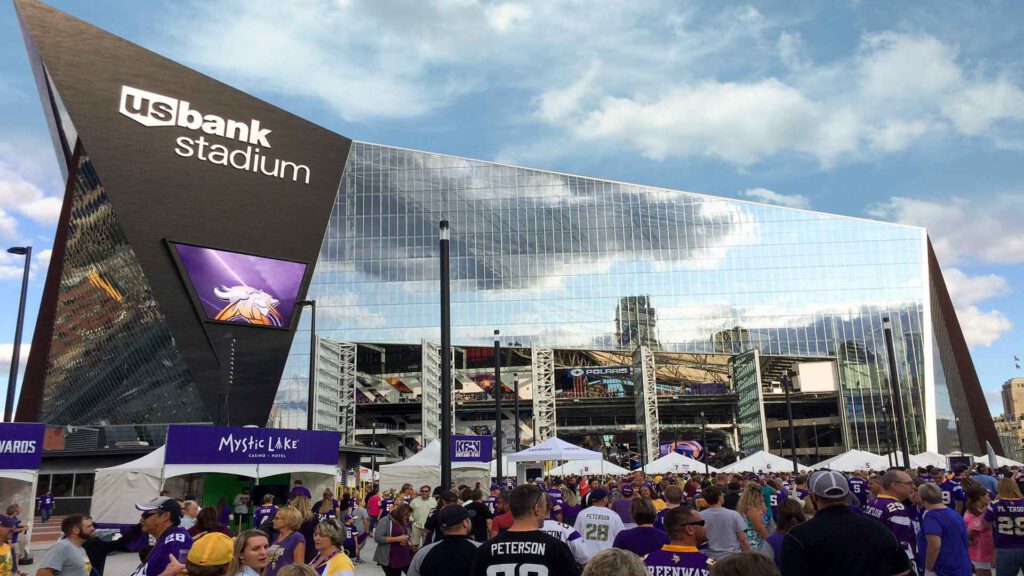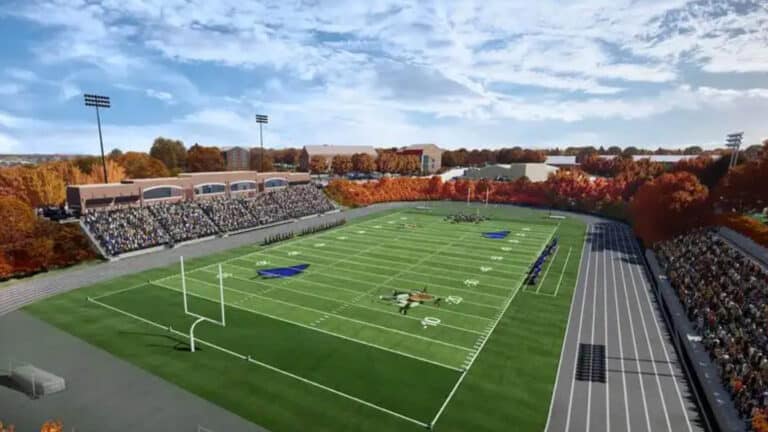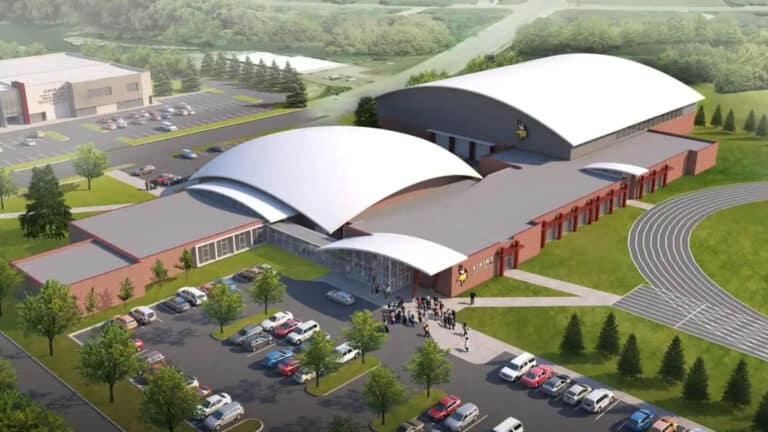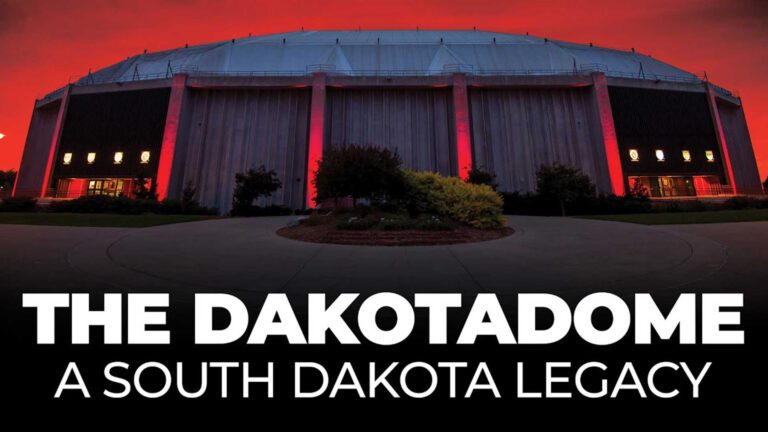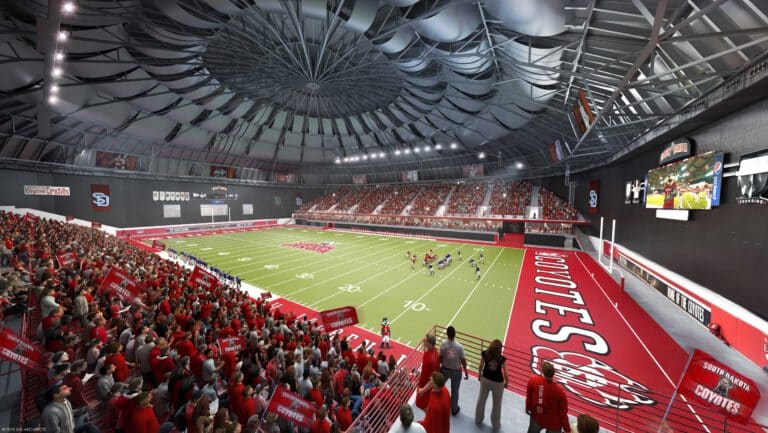Fans who witnessed the thrilling 2018 Super Bowl between the New England Patriots and Philadelphia Eagles on Sunday may not have realized the stadium they filled is part of an elite group of sports facilities around the country that were built to the highest level of energy efficiency and sustainability.
U.S. Bank Stadium in downtown Minneapolis received gold-level LEED certification (Leadership in Energy and Environmental Design) from the Washington, D.C.-based United States Green Building Council in November.
Though the stadium’s LEED designation counts as a big deal, it’s not so uncommon in the Twin Cities. New York-based Lew Blaustein, who follows sustainability and sports for his GreenSportsBlog, said the only other city with a similar number of LEED stadiums and arenas built or under construction is San Francisco.
“San Francisco is pretty close,” he said. “On a stadium per-capita-basis you guys are right near the top. You’re right up there. I think it has to do with the ethos of the area.”
Sheri Brezinka, regional director of the U.S. Green Building Council, said a couple of factors are at work.
“Minnesota has quietly become a leader in the nation in sustainability,” she said.
Secondly, a state policy requires buildings receiving public money to follow sustainability standards set out in the state-sponsored B3 Guidelines, which align closely to LEED standards, Brezinka said.
Stadiums run a lot of events with many attendees, she said, so saving on energy and waste just makes good economic sense. Target Field, also in Minneapolis, led the way in sustainability locally and nationally, she added, and that helped prompt other team owners to build LEED stadiums.
In fact, Target Field, once named the greenest ballpark in America, was recertified as LEED gold last year, moving up from a silver certification. TCF Bank Stadium was the first college football venue in the nation to receive LEED certification.
In St. Paul, Xcel Energy Center is LEED-certified, and Allianz Field, the new soccer stadium for the Minnesota United FC, plans a sustainable field. CHS Field, home to the St. Paul Saints, followed B3 guidelines but chose not to pursue LEED.
Many new stadiums around the country are pursuing sustainability by locating in urban neighborhoods rather than suburbs, by linking to mass transit, and by having electric vehicle charging stations and on-site renewable energy, Blaustein said.
Those features are certainly reflected in U.S. Bank Stadium, which was celebrated Jan. 23 during a U.S. Green Building Council luncheon in Minneapolis where three people who worked on its construction gave presentations. They addressed demolition of the old Metrodome and how the design and setting set the stage for LEED.
Building a LEED stadium
Brian Wolfe, sustainability design coordinator for U.S. Bank Stadium architect HKS Inc. of Dallas, pointed to the importance of location in accruing LEED points. Access to transit, skyways and bicycle lanes all contributed. “It’s one of the most urban stadiums in the nation,” Wolfe said.
Construction materials play an intrinsic role in developing a sustainable stadium. The major goal of the Minnesota Sports Facilities Authority was to have an outdoor sensibility in an indoor environment, Wolfe said.
A key decision in the stadium design was to use as the roof ethylene tetrafluoroethylene, or ETFE, a durable, translucent material capable of performing well even in Minnesota’s harsh climate, he said.
Lighter than glass, ETFE allowed architects to reduce the amount of steel required by 2,000 tons and reduce work time. “We cut off three months of construction time,” Wolfe said.
Achieving LEED is not only about construction and location. It’s also about managing well the dirty work of demolition. Ben Dupslaff, representing stadium general contractor Mortenson Construction, said 82 percent of waste from the former Metrodome stadium at the site was diverted from landfills, or more than 100,000 tons.
To avoid having employees move trash constantly across the site, Golden Valley-based Mortenson placed color-coded dumpsters all over the demolition area. Black dumpsters took metals and rebar, and green accepted trash, he said.
Attention was paid to ensure indoor air quality through onsite temporary filtration equipment and by having trucks wet down dirt areas on the site throughout the day, he said. Even before haulers left, their loads were sprayed with water so that dust wouldn’t cover the surrounding neighborhoods.
“As the general contractor we’re responsible for the overall safety on the job site,” Dupslaff said. “A clean site is a safe site.”
The nod to being clean extends to equipment brought in during construction, he added. Keeping ductwork clean enough to “eat off” is a priority because cleanup can be expensive if it’s installed with dirt, Dupslaff added.
Finally, he emphasized how keeping records daily and weekly will simplify the enormous task of meeting LEED’s meticulous reporting requirements. When purchasing products, Dupslaff asked vendors selling materials with recycled content to document their claims.
Jim Douglas, director of energy and software services for the Minnetonka-based Weidt Group, spoke about making the building energy-efficient through LED lighting, an innovative air-handling system, building automation and other approaches.
Sophisticated software controls the heating and cooling to optimize both comfort and cost savings. The ETFE roof creates a heat reservoir that allows the stadium to recirculate thermal heat in winter to the bowl below and to ventilate it in summer, Douglas said.
Now that data has been collected through advanced energy metering and other techniques during the past year, the stadium can continue to fine-tune performance to reduce costs, Douglas said. So far, the stadium uses much less energy and lighting than the Metrodome using comparable metrics, he said.
U.S. Bank Stadium, as Wolfe noted, has a strong record for recycling, composting and water conservation. Last year the stadium recycled 135 tons of waste, according to a fact sheet on the stadium’s website. All waste receptacles have clear signage to guide fans dumping trash.
A sustainable Super Bowl
Minneapolis and the NFL can certainly argue they held a sustainable Super Bowl LII, Blaustein said. Energy consumed by the stadium, for example, is offset by renewable energy credits. The same is true for the Minneapolis Convention Center, home to the NFL Experience attraction.
San Francisco had the greenest Super Bowl two years ago, when the environment was the centerpiece issue for the local organizing committee, said Blaustein, who served as consultant on that project. On the other hand, Houston did nothing last year to promote sustainability, he noted.
The NFL does its part for sustainability, too. Ben Shardlow, chair of the Minnesota Super Bowl Host Committee’s Sustainability Committee, said NFL worked closely with the stadium and the convention center to improve waste diversion.
One part of the program gives materials and equipment left over from parties and events to community service organizations to distribute to their partners, he said. It also planted trees in Minneapolis, a benefit it offers every host community.
Sustainability could become a marketing tool for the Twin Cities.
“I think there are larger opportunities to compete in recruiting other events by talking about our sustainability efforts and how we managed waste and energy and all these things during the Super Bowl,” Shardlow said. “It’s a compelling case.”
It is for the NFL, too, but the league and its members have never embraced its potential bragging rights, added Blaustein.
“There is a disconnect — teams and the league are not telling those stories [about sustainability],” he said. “None of them are talking about climate change and their greening efforts, or they’re doing it at a very low volume.”
